Posted by Elena del Valle on October 25, 2013
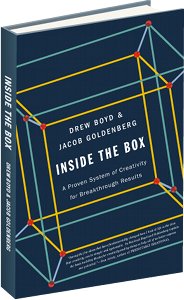
Inside the Box: A Proven System of Creativity for Breakthrough Results
Photos: Drew Boyd, Jacob Goldenberg
Innovation is likely when working in a familiar world with tools that foster our creativity, say Drew Boyd and Jacob Goldenberg. They’re convinced inventive methods follow common patterns or Systematic Inventive Thinking (SIT) in use, according to them, by hundreds of companies. They also believe creativity is a skill anyone can learn and perfect.
In Inside the Box: A Proven System of Creativity for Breakthrough Results (Simon & Schuster, $28.50), a 257-page hardcover book published this year, they outline their approach and the characteristics of SIT.
“Research has shown that just telling people to ‘think outside the box’ does not improve their creative output. It does not give people the cognitive instructions how to generate an idea,” said Goldenberg by email in response to the question of thinking outside versus inside the box. “Instead, it prompts people to stray far away from the problem in unconstrained ways. This is both inefficient and highly unlikely to generate a creative solution. On the other hand, research shows conclusively that constraining one’s thinking, inside the box, with fewer options and tight boundaries prompts far more creative output than unconstrained thinking. Limiting the brain’s options makes it work harder to find a creative solution.”
The book project took two years to complete while development of the SIT lasted four years, and the work in the field took more than 12 years, he explained. In the book, the authors discuss five problem solving techniques: Division, Subtraction, Multiplication, Task Unification and Attribute Dependency. By removing something that had previously been thought essential a product or service may be adapted for a new use, according to the Subtraction technique. By dividing a component out of an existing product or service that initially seemed not to function it may be possible to transform it into something productive, according to the Division tecnique.
In Multiplication, a part of a product is copied after being modified. Bringing tasks together into one component of a service or product is Task Unification. Usually the component had been previously thought to be unrelated to the task. When two or more attributes initially thought unrelated are brought together successfully there is Attribute Dependency, the authors say.
Rather than start with a problem and seek solutions they suggest the opposite. “Let me tell you a secret: consumers don’t care if the problem was defined first and then a solution was found, or the opposite way. All they care about is if they have a new solution to a meaningful problem,” said Goldenberg.
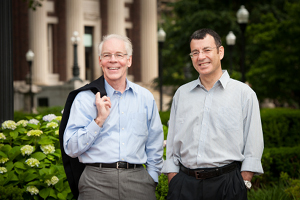
Drew Boyd and Jacob Goldenberg
“However, the latter direction is much more effective for creative (only creative) ideation. Psychology researcher Ronald Finke and his colleagues discovered that people hold inside their head an ambiguous, pre-inventive form the instant before generating an idea. People essentially start with a configuration in their head and then seek ways to make that configuration useful. They called it Function Follows Form. They also concluded that people are better at this direction of thinking. They are better at searching for benefits for a given configuration (starting with a solution) than they are finding the best configuration for a given benefit (starting with the problem). The method, SIT, structures your creative thought processes to first create these configurations in your head, and then it leads you to find a benefit for that configuration. Done properly, you end up with a creative idea.”
Boyd is executive director, Master of Science in Marketing Program, and assistant professor, marketing and innovation, University of Cincinnati. Prior to that he worked for Johnson & Johnson, United Airlines and was an officer in the United States Air Force. He dedicates his time to the fields of innovation, persuasion, and social media.
Goldenberg is professor, marketing, School of Business Administration, Hebrew University of Jerusalem, and visiting professor, Columbia Business School and the Interdisciplinary Center-Herzliya (IDC). His research focuses on creativity, new product development, diffusion of innovation, complexity in market dynamics, and social network effects. The company he established with his partners, which created the SIT system, works with more than one hundred companies worldwide, from the United States to Argentina to Kazakhstan.
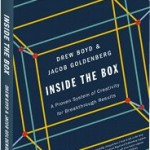
Click to buy Inside the Box
Comments:
Filed Under: Books
Posted by Elena del Valle on October 18, 2013

Latino Americans audio book
Photos: HighBridge Audio
In an effort to showcase the role of Hispanics in the history of the United States Ray Suarez, a broadcast journalist, recorded Latino Americans (HighBridge, $34.95) an audio book, as a companion to Latino Americans, a book and documentary television series designed to “chronicle the rich and varied history and experiences of Latinos” by the same name.
The television programs, featuring interviews with several dozen Latinos, aired on public television earlier this year. The unabridged audio recording is based on the book and read by Suarez. The label released it September 2013. It includes nine and a half hours of recording time on eight CDs.
“At the risk of stating the obvious, a television documentary demands to be watched. You must sit in one place and watch as the images accompany the narration. The audio book can, and must, go deeper, as the book does,” said Suarez by email when asked why he opted to record an audiobook and not just the documentary.
“Stories that are briefly shown on the television program are explored in great depth in the audio book, and you can consume the audio book while driving, cooking, or taking your daily walk. The audio book goes where you go, and tells you a story whatever you’re doing. Already with friends and family members I’m reminded of how many people use audio books, and for a wide range of reasons…from helping to break the tedium of a long commute, to getting around the difficulty of reading small type with less acute eyesight, to just wanting company during daily exercise.”

Ray Suarez during the recording of Latino Americans audiobook
In the audio recording, Suarez explores the Latino Americans in early European settlements, Manifest Destiny, Wild West, Cold War, Great Depression, Globalization, Spanish-American War and Civil Rights movement.
Regarding his personal connection with the audiobook Suarez said, “Latino Americans is my third book, but the first of them to become an audiobook. It was an interesting, and sometimes taxing process saying that many words out loud! It made me realize why actors are called upon so often to be the voice of audio books. After all, I had to ‘become’ everyone I quote in my story, men and women, across 500 years of history. A challenge, a joy, and a reminder of why simple sentences work as good storytelling!”
Suarez is a senior correspondent for PBS NewsHour, and host of the public radio show America Abroad. He has also been host of Talk of the Nation on NPR and a correspondent for CNN.

Click to buy audio book Latino Americans
Click to buy DVD Latino Americans
Posted by Elena del Valle on October 15, 2013
Oregon Health & Science University
Portland, OR
Oregon Health & Science University (OHSU), based in Portland Oregon is seeking a Vice President of Marketing & Communications. This is a new senior leadership position that will bring together and oversee the medical center and university marketing and communications activities.
Rated a Click to read the entire ad Vice President of Marketing & Communications
Posted by Elena del Valle on October 14, 2013

Three researchers examined TIGER indexes for 23 countries
Is the world economy improving? Yes, sort of. After examining key economic indicators of a group of advanced and emerging markets three researchers concluded the economic turn around remains slow and uncertain. Eswar Prasad, Karim Foda and Arnav Sahu, authored the October 2013 Update to TIGER: Tracking Indexes for the Global Economic Recovery published this month by The Brookings Institution and the Financial Times.
Growing confidence in advanced economies and stable growth in emerging markets are driving the economic climate. The analysts are convinced that the economy “remains just a shock or two away from turning into another slump.”
They shared TIGER indexes for 23 countries and charts for the indicators indexes, each including real activity, financial and confidence indicators. The countries are Argentina, Australia, Brazil, Canada, China, France, Germany, Greece, India, Indonesia, Ireland, Italy, Japan, Korea, Mexico, Netherlands, Portugal, Russia, South Africa, Spain, Turkey, United Kingdom and United States.
The Overall Growth Index, the Real Activity Index and other charts for the United States, for example, show a deep slump in 2009 with varying degrees of recovery since. The confidence index was the most worrisome.
It appears the worst is over for advanced economies including Europe, Japan, United States, and United Kingdom. The latter “is experiencing surprisingly good growth.” Overall in advanced economies although jobs creation is weak and financial conditions are mixed confidence in the private sector has increased and inflation is modest. We’re not out of danger, seems to be the cautionary message which points to the need for growth.
At the same time, emerging market economies, such as China, India and Brazil, which had stopped growing are looking stronger. Private sector confidence in these countries had been poor recently and has improved somewhat.
Eswar Prasad is senior fellow, Global Economy and Development
new century chair in International Trade and Economics. Karim Foda is research associate, Global Economy and Development,
and Arnav Sahu is a student at Cornell University.
Posted by Elena del Valle on October 11, 2013
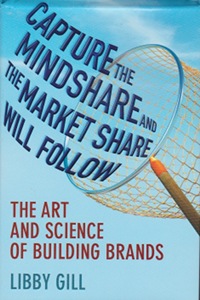
Capture the Mindshare and the Market Share Will Follow
Some people are brand loyal because they believe that those brands provide them with extraordinary value that cannot be acquired any other way. That is how Libby Gill, a Los Angeles management consultant, sees the relationship between consumers and brands. She says that the most successful brands are carefully built by people who are meticulous about getting certain things right.
In Capture the Mindshare and the Market Share Will Follow: The Art and Science of Building Brands (Palgrave MacMillan, $26), a 240-page hardcover book published this year, she explains her thinking. When she writes about mindshare she’s referring to the heads, trust, loyalty and hearts of a company’s customers.
In the book, she promises readers a blueprint for deep and lasting connections for executives, entrepreneurs, leaders and those who seek to influence, sell, persuade or attract customers. She defines branding as the ability to maintain an on going connection through awareness of value that drives others to act and create loyalty born of hope, trust and respect.
She describes seven elements she sees as necessary for the creation of the powerful company client relationships that generates customer loyalty and promotes economic success among successful brands. The elements are: Clarify Customer Benefits, Commit to Your Customer, Collaborate with Your Customer, Connect with Your Customer, Compete with Your Competition, Communicate with Confidence and Certainty, and Contribute to the Community.
An executive coach and branding expert with over 20 years of industry experience, Gill is the former head of communications and public relations for Sony, Universal, and Turner Broadcasting. Her clients include ABC-Disney, Nike, PayPal, Warner Brothers, and Wells Fargo. Her previous books are Traveling Hopefully: How to Lose Your Family Baggage and Jumpstart Your Life, and You Unstuck: Mastering the New Rules of Risk-taking in Work and Life.
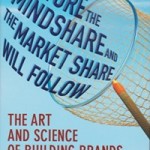
Click to buy Capture the Mindshare and the Market Share Will Follow
Comments:
Filed Under: Books
Posted by Elena del Valle on October 4, 2013
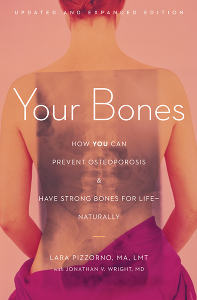
Your Bones book cover
Photos: Praktikos Books
Fifty-six million Americans suffer from bone disease or have low bone mass, according to National Osteoporosis Foundation (NOF) data released April 2013. The Foundation numbers point to 9 million adults in the United States estimated to have osteoporosis. Another 48 million have low bone mass (indicated by T-scores between -1.0 and -2.5), and are at increased risk for osteoporosis and broken bones, according to the Foundation’s study titled The 2010 Burden of Osteoporosis and Low Bone Mass among Residents of the U.S. Age 50 and Older.
Osteoporosis is held responsible for 1.5 million fractures a year costing sufferers of the silent condition pain, quality of life loss and in some cases eventually death. When there are catastrophic fractures as many as 20 percent of patients die, and 50 percent of survivors require long term nursing home care.
For years, doctors have prescribed potent medicines that they promised would alleviate or eliminate the problem. Lara Pizzorno, MA, LMT, managing editor, Longevity Medicine Review, and Jonathan V. Wright, MD, who holds degrees from Harvard and the University of Michigan, believe a natural path can lead to healthy bones. In Your Bones How You Can Prevent Osteopororosis & Have Strong Bones for Life-Naturally (Praktikos Books, $12), a 496-page soft cover updated and expanded edition published March 2013, they explain how readers can turn brittle bones strong.
Pizzorno, the lead author, and Wright start out by outlining why biophosphonate patent medicines should be the last alternative for osteoporosis patients; and how conventional medicine aggravates the problems it promises to solve with prescription medicines that are not naturally occurring. Next, they address the risk factors that may lead to osteoporosis and low bone mass, also known as osteopenia. The authors dedicate the remainder of the book to what they believe is the best way to achieve healthy, strong bones with nutrition and lifestyle adjustments.
In Chapter 7, for example, they outline the role of vitamins and minerals such as B, D, C, K and calcium, magnesium, zinc, strontium as well as studies to support their arguments. They address issues relevant to supplements and safety and provide examples of foods high in each of the vitamins and minerals. They also discuss the role of hormones, weights and exercises in bone building. The extensive book includes tables with listings of foods and their nutrient values, and appendices with information about bone lab tests and vitamins and minerals.
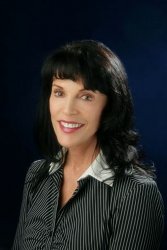
Lara Pizzorno, lead author, Your Bones
Pizzorno is co-author of Natural Medicine Instructions for Patients, and editor of The World’s Healthiest Foods: Essential Guide for the Healthiest Way of Eating. Wright, according to his bio, has been at the forefront of natural biomedical research and treatment since 1973. The authors live in the Seattle, Washington, area.

Click to buy Your Bones
Comments:
Filed Under: Books






















